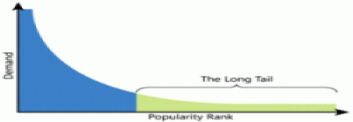How the Digital Economy Affects Markets and Firms
Market information
Price comparison sites
-
Markets commonly have ‘asymmetric information’ (seller know more than buyers – second hand car salesmen are the classic economic example).
-
Search engines, price comparison websites and consumer reviews have changed this (for those that use the internet that is).
-
Have you ever posted on fb/twitter seeking purchasing advice?
-
Name a price comparison website that you’ve used.
Social media & Viral marketing
-
Social media can be both cheaper and more effective than TV or print.
-
All social media advertisers hope that their messages will go viral.
Supply-side
Online retailing/distribution
-
eRetailing cuts out the middle men, start-ups are faster and cheaper than high street rentals, order processing is simple and valuable consumer data can be collected.
-
‘Dark stores’ are warehouses that process on-line orders.
-
‘Bricks and clicks’ – traditional stores alongside an eRetailing option.
-
Unaffected markets?
-
Convenience stores, high street clothing stores, jewelry etc.
Micromarketing
-
Data can be collected on lifestyles, spending habits, attributes and attitudes of the target group.
-
This can lead to more focused marketing – ‘micromarketing’; a customised marketing strategy in which advertising efforts are focused on a small, well defined group of consumers.
-
A good example of this is loyalty cards.
Recruiting/training staff with digital skills
-
Growth of the digital economy requires rapid expansion of an ICT skilled workforce.
-
This can be viewed as ‘creative destruction’ in action and workers can be expected to adapt.
-
Though there are recruitment bottlenecks where suitably skilled workers are in short supply.
-
E.g., A shortage of programmers in the UK, and the government’s restructuring of the subject ‘ICT’ to ‘Computing’.
-
A shift in employment patterns is required – the pace of change is very fast though!
Demand-side
Satisfying consumers with the long tail
- Niche = specific = unique. It can be less competitive and thus more profitable than focussing on ‘the hits’ market only. E.g. Amazon stock over 4 million different titles of books!
Wider geographical markets
-
The digital economy has sped up globalisation in trade – consumers on any continent can buy directly from suppliers anywhere.
-
PayPal offers a relatively secure global payment system and many credit cards operate worldwide.
-
Thus domestic firms have the opportunity to sell around the world, but are also open to global competition!
-
Consumers benefit from this choice and level of competition though.
Impact on markets and firms - Outline the impact of the digital economy on markets and firms
Impact on costs, prices, profit and loss, firm creation and destruction in a new business environment
-
Information is more accessible, start-up costs are lower (low barriers to entry, thus _generally _encouraging competition (though firm like Microsoft with 75% of OS’s can still exist in the digital economy), lower fixed costs (no need to pay commercial rents! eRetail!). All lead to lower costs, lower prices and potentially higher profits.
-
Firms will make losses if they cannot keep up with the level of ‘creative destruction’, but more flexible businesses will profit from the change
-
Shorter product life cycles mean rapid reinvention is a must (expensive R&D and MR). Also, a ‘low asset’ business means less collateral to borrow against – it’s not all positives.
-
Classic A04 – ‘evaluate the impact of the digital economy on markets and firms’ from the pros vs cons above.



